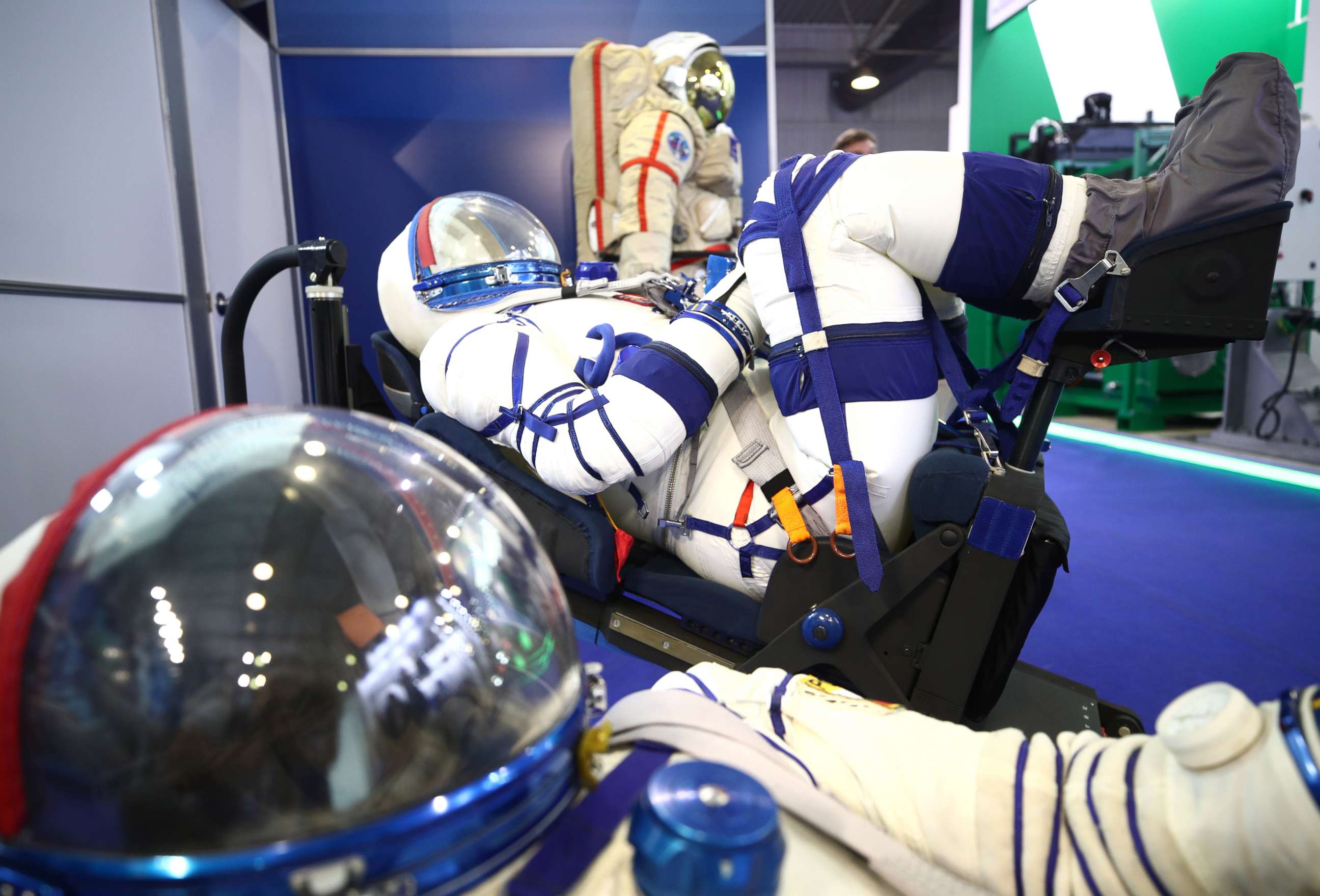Spacesuit redesign means Russian astronauts may have to end pre-flight ritual
For decades cosmonauts have urinated on a bus wheel before takeoff.
MOSCOW -- Russian cosmonauts may have to end a decades-old tradition in which they urinate on the wheel of the bus taking them to the launch pad because their new spacesuits include one important modification—no fly.
In 1961, the Soviet pilot Yuri Gagarin, the first man to reach space, reportedly asked his bus driver to pull over to allow him to relieve himself before he took off from the Baikonur spaceport in Kazakhstan. Gagarin is said to have urinated on the bus’ rear right tire.
Since then, every crew, including U.S. astronauts, taking off from Baikonur aboard Russia's Soyuz rockets have done the same, turning it into a pre-flight ritual. Female crews are not obligated to follow the tradition, though many bring vials of their urine to pour on the wheel.
Russia’s space agency, Roscomos, is planning to bring in new suits, which were shown to journalists this week, and a change in the design means future cosmonauts may no longer be able to so boldly go.
“I don’t know how this will happen, we don’t have zippers,” Sergey Pozdnyakov, the director of Zvezda, the company that designed the new suits, told reporters.
Roscomos has commissioned the new "Sokol-M" suits to be worn aboard its Federation spacecraft. Most modern suits contain diapers that allow astronauts to urinate while in space. The older "Sokol-KV2" suits that the "Sokol-M" is intended to replace had a diaper but also had a v-shaped zipper around the crotch, which the new suits do not.
“We have the design specifications. They don’t state that it’s necessary to pee on the wheel,” Pozdnyakov said, according to the state news agency TASS. “The technical specification would have to be added to.”
Pozdnyakov said the company would add zippers if asked.

Currently all crew aboard the International Space Station wear customized versions of the Sokol-KV2 suit since they must travel to the station on Russia’s Soyuz. The Soyuz from Baikonur is the only route to the ISS, though NASA hopes to re-start its own manned launches using SpaceX rockets.
The Soyuz is due to be phased out but is likely to remain in service for at least several more years, as Russia attempts to complete its Federation craft, which has suffered a series of delays since work began on it in 2009.




